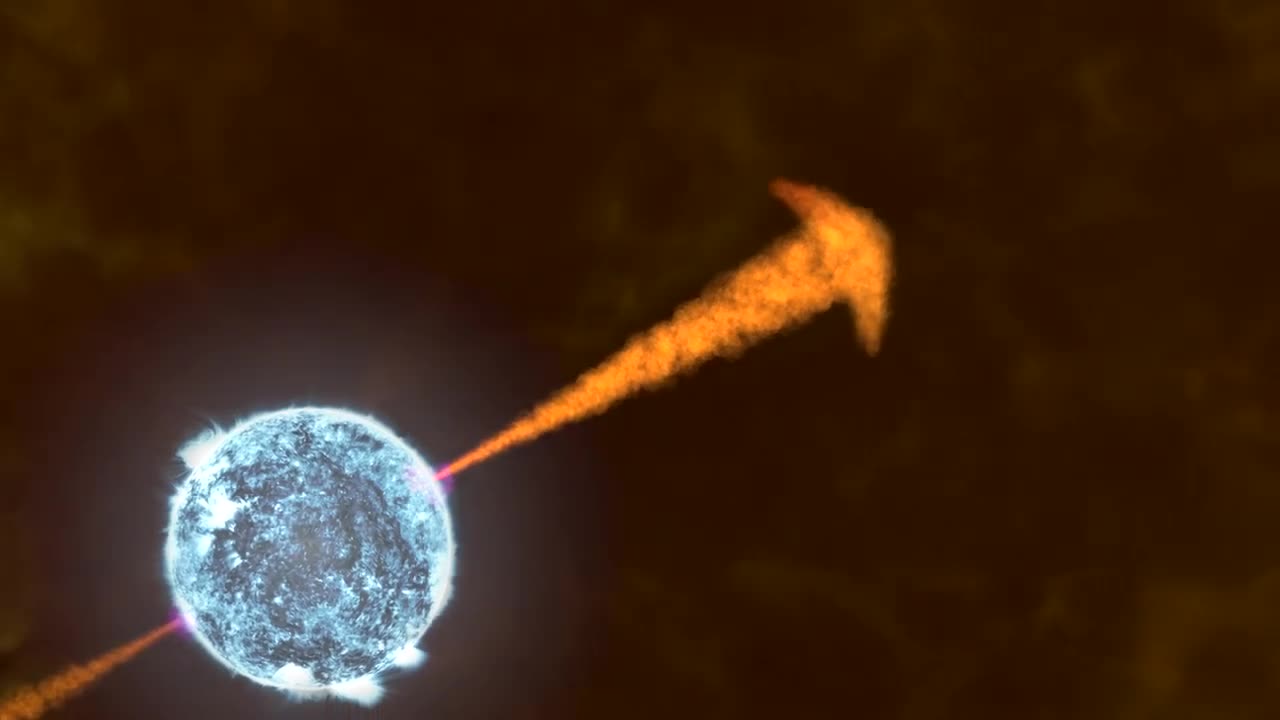Premium Only Content

An OverView Of Gamma - Ray Burst. NASA - ISRO
As of my last knowledge update in September 2021, the "Aditya-L1" mission by the Indian Space Research Organisation (ISRO) was a planned mission to study the Sun. Please note that there may have been developments or changes in the mission since then, so it's a good idea to check the latest information from ISRO or reliable sources for the most up-to-date details. Here is a detailed description of the Aditya-L1 mission as of my last update:
Mission Name: Aditya-L1
Objective:
The primary objective of the Aditya-L1 mission was to study the Sun and its outermost layer, the solar corona. Specifically, it aimed to enhance our understanding of the various physical processes that occur in the solar atmosphere, such as solar flares, coronal mass ejections (CMEs), and their impact on space weather.
Key Scientific Goals:
Studying the Solar Corona: Aditya-L1 was designed to make detailed observations of the solar corona, which is the outermost layer of the Sun's atmosphere. Understanding the corona is crucial for unraveling the mysteries of the Sun's magnetic field, heating mechanisms, and the origin of solar wind.
Solar Activity Prediction: The mission aimed to improve our ability to predict solar activity, which can have significant implications for space weather. Solar flares and CMEs can disrupt satellite communications, navigation systems, and power grids on Earth, making it vital to forecast these events accurately.
Characterizing Solar Wind: Aditya-L1 was expected to provide valuable data about the composition and properties of the solar wind, which is a stream of charged particles emanating from the Sun. Understanding the solar wind is crucial for understanding its effects on the Earth's magnetosphere and geospace environment.
Payload and Instruments:
The Aditya-L1 spacecraft was planned to carry a suite of instruments capable of observing the Sun across a wide range of wavelengths. Some of the key instruments included:
Visible Emission Line Coronagraph (VELC): VELC was designed to observe the solar corona in visible light, allowing scientists to study the dynamics and magnetic structure of the corona.
Solar Ultraviolet Imaging Telescope (SUIT): SUIT was intended to capture high-resolution images of the Sun's outer atmosphere in the ultraviolet spectrum, providing insights into temperature variations and solar activity.
Aditya Solar Wind Particle Experiment (ASPEX): ASPEX was designed to measure the properties of solar wind particles, including their velocity, composition, and energy.
Launch and Orbit:
Aditya-L1 was planned to be launched into a halo orbit around the first Lagrangian point (L1) of the Earth-Sun system. This location offers a stable platform for continuous observations of the Sun, with minimal interference from Earth's atmosphere.
Significance:
The Aditya-L1 mission was of great scientific importance, as it aimed to advance our knowledge of the Sun's behavior and its impact on space weather. Improved space weather predictions are essential for safeguarding spacecraft and Earth-based technological infrastructure.
Please keep in mind that mission details and timelines may have changed since my last update in September 2021. For the latest information on the Aditya-L1 mission, including its status and scientific findings, I recommend visiting the official ISRO website or consulting recent news sources.
-
 1:51:13
1:51:13
Glenn Greenwald
5 hours agoTucker Carlson Speaks at Turning Point, Prompting Cheers and Controversy; More Evidence of Israeli Atrocities Amid Fragile Ceasefire; Tommy Robinson Submits to Re-Education in Israel | SYSTEM UPDATE #536
81K71 -
 12:12
12:12
ARFCOM News
5 hours ago $0.83 earnedThe REAL Reason Glock Bent The Knee + Searched Just For OWNING A Gun?!? + Lemon's Cringe 2A Mistake
1.94K6 -
 LIVE
LIVE
LFA TV
22 hours agoLIVE & BREAKING NEWS! | WEDNESDAY 10/22/25
624 watching -
 1:03:22
1:03:22
BonginoReport
4 hours agoAmerican Political Violence Rages On - Nightly Scroll w/ Hayley Caronia (Ep.161)
97.9K52 -
 LIVE
LIVE
The Jimmy Dore Show
3 hours agoTrump’s MIDDLE FINGER to US Beef Ranchers! Dem Senate Candidate COVERS UP N@zi Tattoo! w/Twila Brase
8,054 watching -
 6:13
6:13
Sean Unpaved
2 hours agoKalshi's Pick of the Day: Who Could Be Florida's Next HC?
8.5K2 -
 7:43:03
7:43:03
Dr Disrespect
9 hours ago🔴LIVE - DR DISRESPECT - BATTLEFIELD 6 KILL CHALLENGE - VS VISS
75.3K5 -
 16:16
16:16
Robbi On The Record
3 days ago $9.56 earnedThe Dark History of Halloween | What You Should Know
37.3K18 -
 LIVE
LIVE
Side Scrollers Podcast
3 days ago🔴FIRST EVER RUMBLE SUB-A-THON🔴DAY 3🔴PLAYING MIKE TYSON'S PUNCH OUT TILL I WIN!
1,208 watching -
 DVR
DVR
Quite Frankly
6 hours agoVatican Rumors, Demon Hunting, Spooky Extras | Leo Zagami 10/22/25
13.1K7